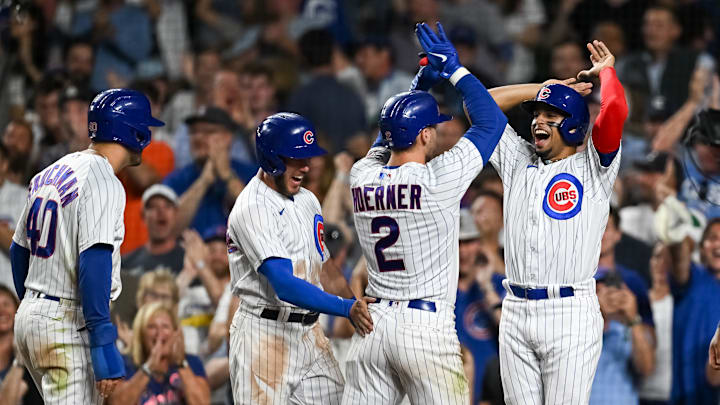In case you missed it, an article by Will Leitch of MLB.com dropped a piece this week handpicking his breakout teams for 2024. In it, the Cubs crack the list, with Leitch referencing the 2014 Cubs as the benchmark of where the current team is at now.
We all remember what happened after 2014. The Cubs went on a stretch of playoff appearances six years in a row, including three straight NLCS appearances from 2015-17, with a World Series championship in 2016. That stretch marked one of the most successful runs in franchise history, as you’d have to go back to 1906-1910 to find a competitive era that was as remarkable.
Since 2020, the Cubs have underwhelmed with multiple losing seasons in a row. President of Baseball Operations Jed Hoyer and his front office have been both scolded and praised at various times during that stretch. For a fanbase that got used to their large market club consistently winning, losing again comes off as unnecessary and avoidable. Anything less than competing is simply unacceptable in the minds of fans.
In the front office's defense, Hoyer’s vision of how to relay a solid foundation on which a sustainable winning culture can be built has not yet come to fruition. There just hasn' t been enough time for the prospects netted in those trades to reach and impact the big leagues.
Yes, the Cubs could max out payroll every season and hope for the best. However, in the end, all this does is put a bandaid on a deep wound. Understanding where the market is today is paramount to understanding why the Cubs are in a much better spot than their 46-51 record suggests.
Last offseason, we saw multiple 10+ year contracts being signed by players throughout the league. This is just what's required to secure a top-tier free agent these days. Hoyer sees the error of these ways and understands that though a player signing for the next decade will help an organization initially, the back end of such contracts are likely to be a drag on the payroll, pushing $25-30M annually.
Chicago Cubs: How can the Cubs sustain long-term success?
With this knowledge, Hoyer has opted to rebuild the farm system, which now ranks top five in the league. This direction means fans must be patient until this talent starts impacting the big league roster. One thing the Cubs must do this season is understand that the chance to sneak into the expanded postseason field is slim and winning the World Series is virtually zero. Trading valuable assets that will not be extended for top-of-the-line prospects is essential for the Cubs' future success.
According to MLB Pipeline, the Cubs currently boast four top 100 prospects, with another publication even listing a new Cubs prospect, Matt Shaw, in the top 100. With the #7 prospect in baseball, Pete Crow-Armstrong, on his way, along with a young group of players proving themselves in Christopher Morel and Miguel Amaya, the Cubs are almost ready for a new young core that will be supplemented by All-Star veterans Ian Happ and Dansby Swanson. Nico Hoerner and Seiya Suzuki are also still around for the next three years.
Should Cubs prospect Matt Mervis wind up working out, the Cubs payroll will be low and filled with players on very team-friendly deals that can help the club compete. Subsequently, this allows funds to be allocated to top-tier players on the free-agent market.
In the end, instead of being forced to open the checkbook now, which will inevitably close the competitive window sooner than wanted, the Cubs will be able to supplement those big names by churning out prospects year after year. Once these prospects begin to click at the major league level, Hoyer will be praised for building a winning culture that will survive for years to come.
